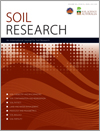SR19161Challenges and opportunities for grain farming on sandy soils of semi-arid south and south-eastern Australia
 , Therese McBeath, Rick Llewellyn, James Hall, Vadakattu VSR Gupta and Lynne M Macdonald
, Therese McBeath, Rick Llewellyn, James Hall, Vadakattu VSR Gupta and Lynne M Macdonald
Sandy soils hold little water, organic matter or nutrients and are often severely water repellent. These represent significant challenges for grain growers, especially in low rainfall environments like south-eastern Australia. However, there remain significant opportunities for improving crop productivity here. Water repellency can be readily identified and managed to greatly improve crop establishment. Problems of reduced root growth and crop water uptake may require more radical interventions but are likely to be essential in this environment.




